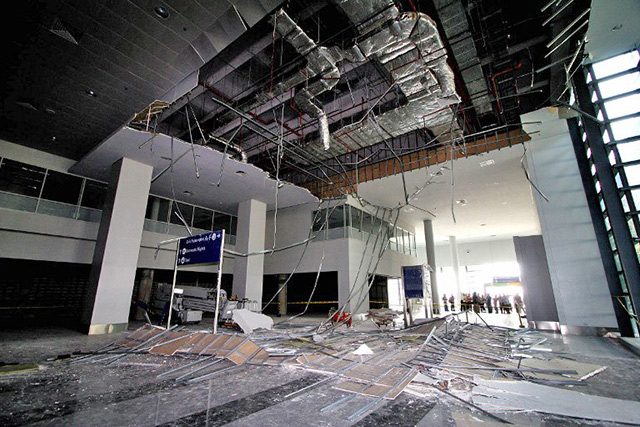SUMMARY
This is AI generated summarization, which may have errors. For context, always refer to the full article.

MANILA, Philippines — It will take two decades before passengers coming in and out of the country can experience the planned Manila’s new international airport.
This is what Socioeconomic Planning Secretary Arsenio Balisacan said on Tuesday, October 27, when asked for updates on plans to replace Manila’s dilapidated Ninoy Aquino International Airport (NAIA).
“Based on the latest discussions with JICA (Japan International Cooperation Agency), it will take two decades from feasibility study to actual operations of the New NAIA,” Balisacan said in a media briefing in Ortigas district.
JICA is being commissioned by the Philippine government to explore possible locations for the New NAIA project.
The chief of the National Economic and Development Authority (NEDA) added that JICA is targeting to come up with the full feasibility study of the new Manila airport “by early next year.”
During a forum in Manila last week, Transportation Secretary Joseph Emilio Abaya said on the sidelines that his department could endorse to the NEDA Board two possible sites for the new NAIA: the reclamation area in Manila Bay and the naval station in Sangley Point in Cavite.
“The difference between the two is that Sangley will cost about $10 billion, while the Manila Bay area is at around $13 billion,” Abaya told reporters last week.
For Balisacan, “Cost is one of the major considerations. But what we are really pushing is for Metro Manila to become more livable through projects like this.”
In a copy of JICA’s discussion paper on its New NAIA proposal obtained by reporters in June last year, the agency said “there will be 3 sources of funds — the public sector, ODA and the private sector” to “arrive at a workable project package.”
JICA told the local Transportation department that “the national government should consider availing of official development assistance (ODA) loans” from the Japanese agency.
These loans, according to JICA, would have preferential terms, such as an interest rate of from 0.55% to 1.40% denominated in Japanese yen (inclusive of government guarantees and foreign exchange risk cover), 40-year repayment, and 10-year grace period on the principal repayment.
JICA added in its discussion paper that the applicable interest rate will be 1.4% as there will be no need for an intermediary as the Japanese government will be dealing directly with the Philippine government.
The Japanese agency said that another source of financing for the project could be a private sector proponent under the public-private partnership (PPP) scheme.
The private sector partner “should have substantial financial resources at its disposal” due to the huge capital requirements of the project, JICA said.
Another source of project financing, JICA proposed, is through a combination of national government funds in the form of viability gap funding, a special infrastructure allotment, and funds from the implementing agencies and select stakeholders.
Viability gap funding in a PPP project means the government would fund the gap and give the money to the concessionaire.
For beyond 2025, the transportation department said that the government will have two options: to close NAIA once the new international airport is expanded into a four-runway airport or retain the dual-airport system and develop NAIA into a two- to three-runway airport. – Rappler.com
Add a comment
How does this make you feel?
There are no comments yet. Add your comment to start the conversation.